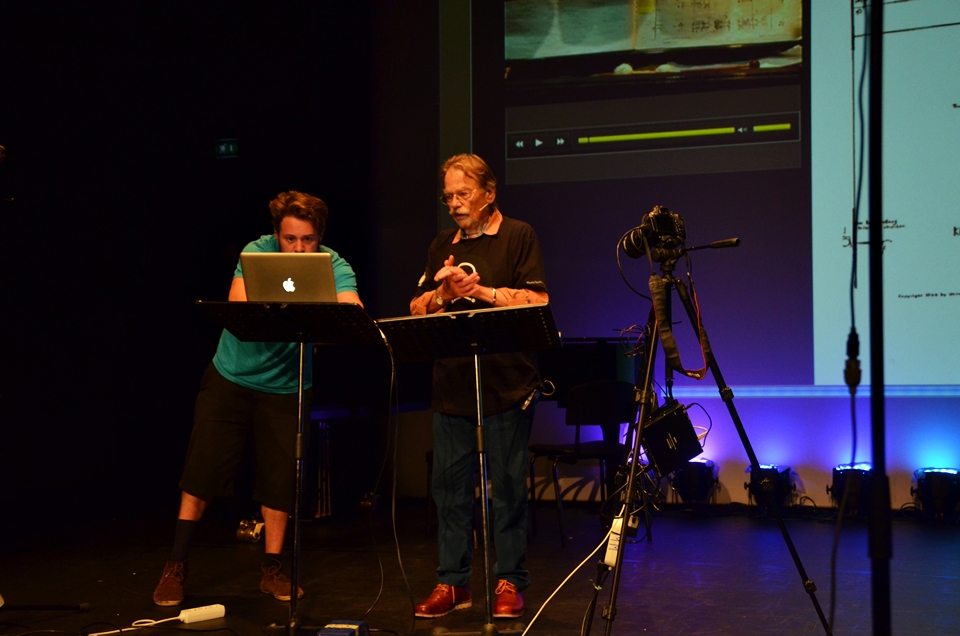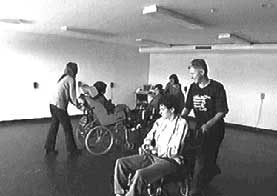The latest article in the Journal of Creative Music Systems discusses the life and work of inventor, composer and musicologist
Rolf Gehlhaar and his contributions to contemporary music and digital sound
design.
Gehlhaar was born in Breslau (Poland, 1943). In 1953,
Gehlhaar and his parents, a rocket scientist and teacher of fine arts,
emigrated to the USA, where he would study at Yale University and the
University of California, Berkeley. He met Karlheinz Stockhausen, who was a
Visiting Professor at the University of California, Davis. Gehlhaar would
continue working with Stockhausen for several years, joining him in Cologne, as
an assistant, performer and sound technician. From the 1970s onwards, Gehlhaar started
working increasingly in the UK, although he also remained active in Germany.
Among his earliest works are Helix (1967),
Klavierstück (1967) and Cello Solo (1966). Detailed descriptions
of all later works are available on his website
and various scores are available here. Together with Johannes Fritsch and David
Johnson, whom he met whilst working with Stockhausen, he founded Feedback
Studio (1969), a new-music performance centre and publishing house, which would
remain his publishing outlet. From 1974 onwards Gehlhaar started researching
computer-aided composition and digital sound synthesis, which would dominate
the rest of this career. Gehlhaar was also a founding member of the
Electro-Acoustic Music Association of Great Britain (1979) and was heavily
involved in founding the British Paraorchestra, which was the first of its kind
in the UK.
 One of his most significant achievements in the field was the development of
the SOUND=SPACE instrument, which was one of many new instruments he developed
during his life. SOUND=SPACE is best summarised as a set of sensors set-up
around an empty space, linked to a computer and synthesiser. Together, they
translate the location and movement of the people within it into sounds. As
such, SOUND=SPACE is an instrument that performers can play without the need
for any physical contact with it. Gehlhaar himself described it as an
“interactive musical environment”. SOUND=SPACE featured in various museum
installations, performances and workshops. One notable use of SOUND=SPACE came
through working with special needs users, often children. This
video from 1984 shows SOUND=SPACE in action with a group of special
needs children. In Gehlhaar’s own words “SOUND=SPACE offered many of the
disabled people they worked with the first opportunity to make music freed from
the awareness of their physical limitations” (Gehlhaar, 1991, p. 62). He would
later go on to develop various other projects making music accessible for
handicapped performers. Overall, SOUND=SPACE provided a medium for music
projects in education, therapy and performance for more than two decades.
One of his most significant achievements in the field was the development of
the SOUND=SPACE instrument, which was one of many new instruments he developed
during his life. SOUND=SPACE is best summarised as a set of sensors set-up
around an empty space, linked to a computer and synthesiser. Together, they
translate the location and movement of the people within it into sounds. As
such, SOUND=SPACE is an instrument that performers can play without the need
for any physical contact with it. Gehlhaar himself described it as an
“interactive musical environment”. SOUND=SPACE featured in various museum
installations, performances and workshops. One notable use of SOUND=SPACE came
through working with special needs users, often children. This
video from 1984 shows SOUND=SPACE in action with a group of special
needs children. In Gehlhaar’s own words “SOUND=SPACE offered many of the
disabled people they worked with the first opportunity to make music freed from
the awareness of their physical limitations” (Gehlhaar, 1991, p. 62). He would
later go on to develop various other projects making music accessible for
handicapped performers. Overall, SOUND=SPACE provided a medium for music
projects in education, therapy and performance for more than two decades.
In conclusion, Gehlhaar’s work influenced many musicians and
musicologists throughout the decades. His legacy lies in his development of
instruments controlled without or with minimal touch and the provision for
people with special needs who want to perform. He worked tirelessly to provide
others with the means to express their creativity and create and perform music.
His contributions to music performance, composition and technology will be long
remembered.
Back to News List
